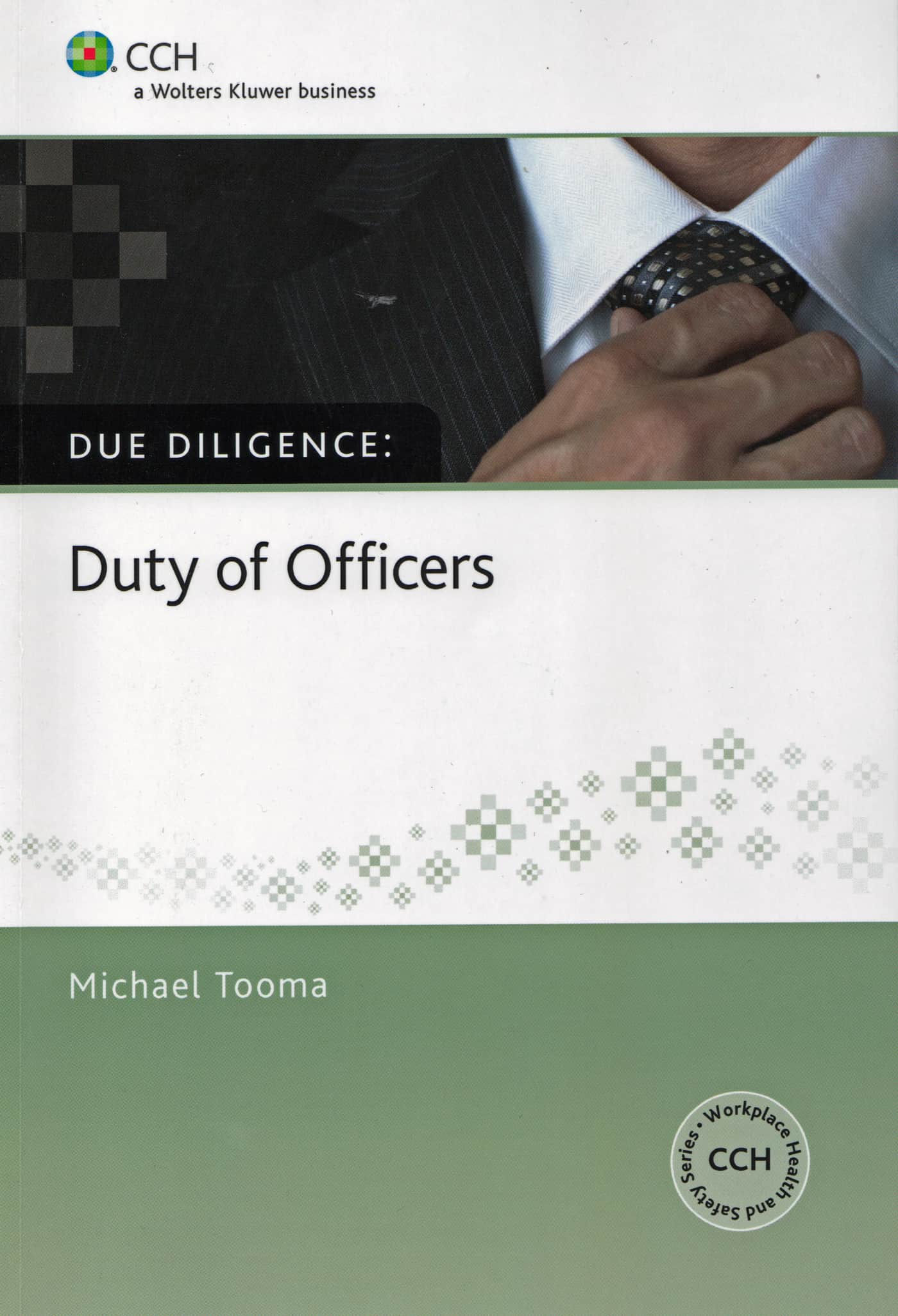 Tooma is a leading figure in Australia’s analysis and application of occupational health and safety (OHS) laws. He has also been a regular author for publisher CCH. His latest book on workplace health and safety is entitled “Due Diligence: Duty of Officers”.
Tooma is a leading figure in Australia’s analysis and application of occupational health and safety (OHS) laws. He has also been a regular author for publisher CCH. His latest book on workplace health and safety is entitled “Due Diligence: Duty of Officers”.
The process for harmonisation of OHS laws in Australia continues to be a rocky one but there are some elements emerging that, even if the laws are not applied in each State, will change the way that OHS is perceived in workplaces. The increased involvement and accountability of senior managers has been a prominent concern through the review process and is a valid starting point for this new series of books.
Tooma writes in the Preface that the series is designed for the “busy executive” (Is there any other kind?) as an explanation for the tone and structure of the book. The book is what has been traditionally described as an “easy read”. I take this as meaning a clean, well-spaced font, minimal footnoting and cross-references. There is a good use of graphics and tables but sometimes the short case studies or examples break up the page too much in such a small formatted book.
Tooma sees the OHS duties of officers as comprising six elements:
- Knowledge of work health and safety matters
- Understanding the nature of the operations
- Resources and processes
- Monitoring performance
- Legal compliance
- Verify
The bulk of the book explores these elements but perhaps the crucial difference in Tooma’s book to other OHS tomes by his learned colleagues, is that he devotes a chapter to the practical application of due diligence. Here he establishes not only the relevance of the new duties but how they vary through the organisational structure. The key messages of this chapter are:
- “While all officers have the same duty, the practical application of the duty at different levels of officers differs.
- A sliding scale of obligations operates so that officers highest in the hierarchy have the greatest due diligence obligations.
- Certain elements will fall squarely in the laps of certain officers because of their role. They will be primarily responsible for delivering on those elements.”
He answers the question most posed at public seminars “how does all this affect me?” The application of the six elements of due diligence are spelt out for each officer position from Chairman to General Manager.
Many of Tooma’s references will be familiar to Australian OHS readers – Andrew Hopkins, James Reason and Lord Cullen – as well as various legal cases. It is a bit surprising that for some of the discussion on informed culture Tooma did not look closer to home with the inquiry into the Waterfall rail disaster by Supreme Court Justice Peter McInerney. McInerney’s chapters on safety culture always seem a missed reference on the Australian and railway context of safety culture.
This new book is part of a series that will be published over the next 12-18 months. These include
- Due Diligence: Incident Notification, Management and Investigation – expected in June 2012
- Due Diligence: Horizontal and Vertical Consultation – expected in September 2012
- Due Diligence: Workers Rights and Duties
- Due Diligence: Dealing with Regulators
- Due Diligence: Persons Conducting a Business or Undertaking
Given that the first in the series costs $A50.00, the series, on only one albeit major element of the new OHS laws, will run at around $A300. This is a big outlay for many safety professionals but perhaps not so big for the intended market of busy executives.
The particular appeal of this book is that not only is it written by an authority in the area but that authority applies a broad definition and application of OHS laws. Tooma has always advocated the application of law rather than wallowing in the legal intricacies as do other legal writers on OHS. Tooma can be a little cocky as some of the comments in the preface may indicate but he also has had the advantage of being exposed to the inquisitiveness of students in law and safety science over a long time. His legal knowledge, business exposure, broad perspective and familiarity in presenting OHS concepts to both students and the layperson is on show in this very good plain English explanation of due diligence and the duties of officers.

I think thatJeremy’s submission is a fair one Aran. If you were adept at reading and interpreting statutes you would not be buying these books. I think it fair to expect that the issues that one would reasonably expect to be covered in a overview such as this should be covered. That being said, I have purchased other books in this range and been very happy.
For God sake, go and get a book on corporations law or look at the Legislation. Do you need to be spoon fed?
Kevin I just obtained my copy today. I have just had a brief review and I am a little dissappointed. I would have thought the burning question for most senior managers is ‘ Am I an officer?’
Other than citing the provisons of the Corporations Act on the definition and putting in old NSW cases on ” persons concerned in the management” under S 26 of the OHSA it doesn’t really assist in answering this question. Also query the relevance for non NSW readers in any event.
An examination of the principles associated with cases on the corporations law definition involving officers is in my view needed. These cases are also to some extent inconsistent with comments in the Safe Work Australia interpretive guidelines. Some discussion on these issues would have been useful.